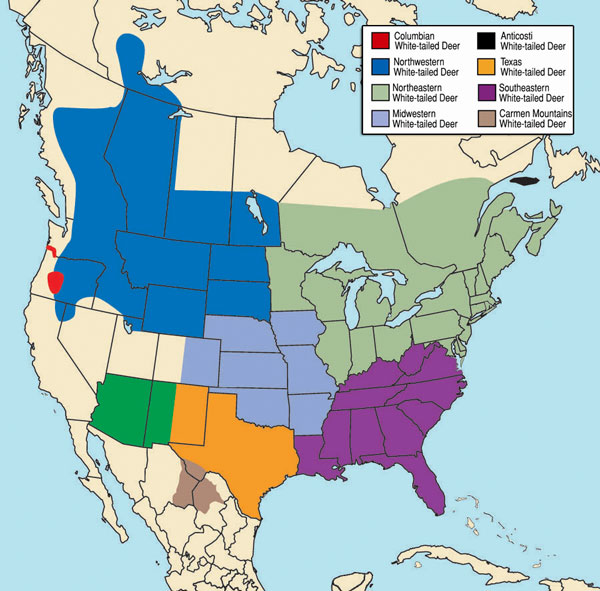Like all deer hunters, I am fascinated by antlers – especially large antlers. A giant whitetail rack stirs something inside me that’s hard to describe.
But size is all relative, isn’t it? What really fascinates me these days are large antlers on smaller, indistinct and rare whitetail subspecies that many have never heard of, let alone hunted. For example, I love hunting the Coues whitetail (Odocoileus virginianus cousi) of the southwest, and the even smaller and rarer Carmen Mountain whitetail (Odocoileus virginianus carmensis) located in a small band of mountains in south Texas that extends into Old Mexico. With both, bucks with antlers comprising more than 110 inches of bone are real studs. This week I am taking the “even when they’re big, they’re small” game a step further, heading to western Oregon to hunt the rare and diminutive Columbian whitetail, Odocoileus virginianus leucurus.

Courtesy Safari Club International
Columbian whitetails are not the continent’s smallest deer – the protected Florida Key subspecies (Odocoileus virginianus clavium) holds that distinction – but it is the smallest which we can hunt. They are found in two separate populations. The lower Columbian River population is found in Wahkiakum and Cowlitz counties in Washington State and Clatsop, Columbia, and Multnomah counties in Oregon State. The second population is in Douglas County, Oregon in the Umpqua River Basin. Early records indicate that Columbian whitetails were once quite numerous over its historic range, from the western slopes of the Cascade Mountains to the ocean and from Puget Sound in Washington State southward to the Umpqua River Basin in Southern Oregon. They became endangered throughout its range due to habitat modification by human activities such as farming, logging, and commercial and residential development. Thus, the Columbian whitetail was federally listed as endangered in 1968, at which time the estimated population was thought to be less than 1,000 individuals. A recovery plan was published in 1983. Unfortunately, the lower Columbian River population suffered heavy losses due to extensive flooding of its habitat in 1996; it remains completely protected today, though biologists believe it will be reproductively sustainable in the years to come. However, the Douglas County population has rebounded and was delisted in July 2003; today that population is estimated to be over 5,000 individuals, is self-sustaining, and the herd is managed by the Oregon Fish and Wildlife Department. Today the Umpqua River Basin is the only place in the world where this subspecies can be hunted.
The largest Columbian whitetail in the Safari Club International record book – SCI is the only major record keeper to recognize this deer as a separate subspecies – is a non-typical taken by Corey Hyde in 2007 in Douglas County that scores 133 3/8 SCI points. The world record typical was taken by Timothy Salisbury near Roseburg, Oregon in 2010; it scores 130 1/8 SCI points. To date, only 18 typical and 5 non-typical bucks entered into the SCI record book score over 100 points. The minimum requirements to gain entry into the SCI book are, firearm: Gold, 98 6/8; Silver, 79 1/8; Bronze, 70; and archery: Gold, 78 1/8; Silver, n/a; Bronze, 45.
These deer can be hunted with any weapon, with spot & stalk techniques the most common method employed. This is right up my alley. My good friend Wade Derby of Crosshair Consulting helped arrange my hunt with crackerjack outfitter Taylor Thorp. The season opens Saturday. I’ll be in the field beginning Friday for some pre-hunt scouting, something Taylor has already been doing. He says things look encouraging; if the buck he texted me a picture of earlier this week, taken through his spotting scope lens, is any indication of what lies ahead, it should be a memorable hunt indeed.
I’ll be posting daily updates on our Facebook page, so why not follow along? Because, sometimes, size really doesn’t matter – unless you’re talking about the adventure.






